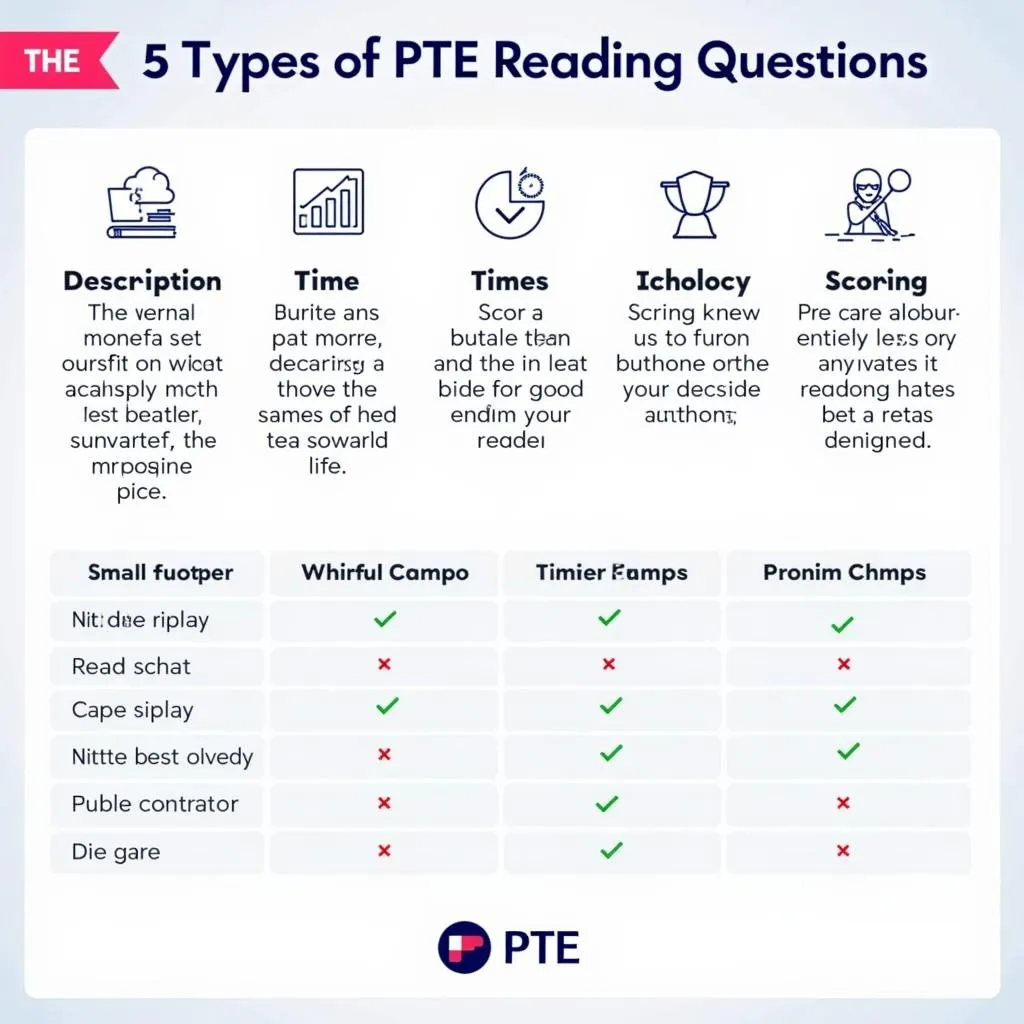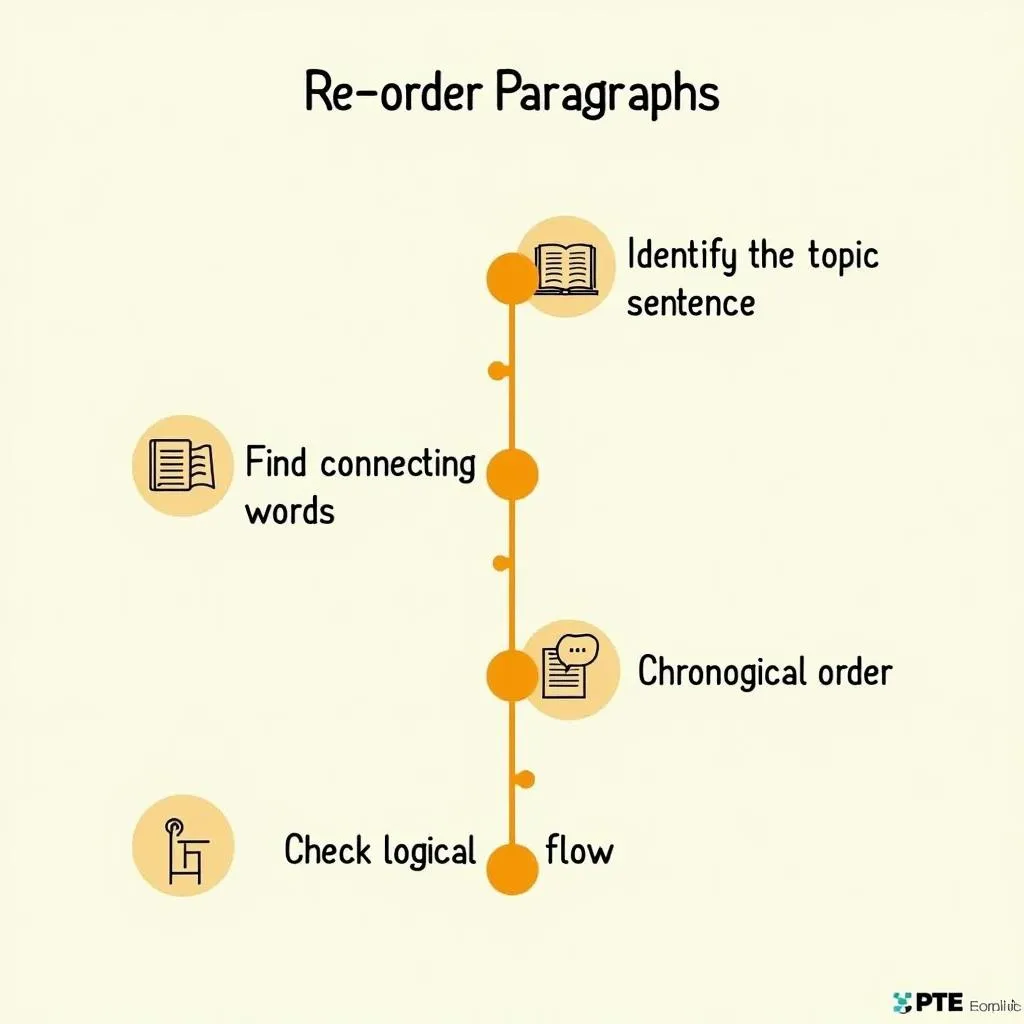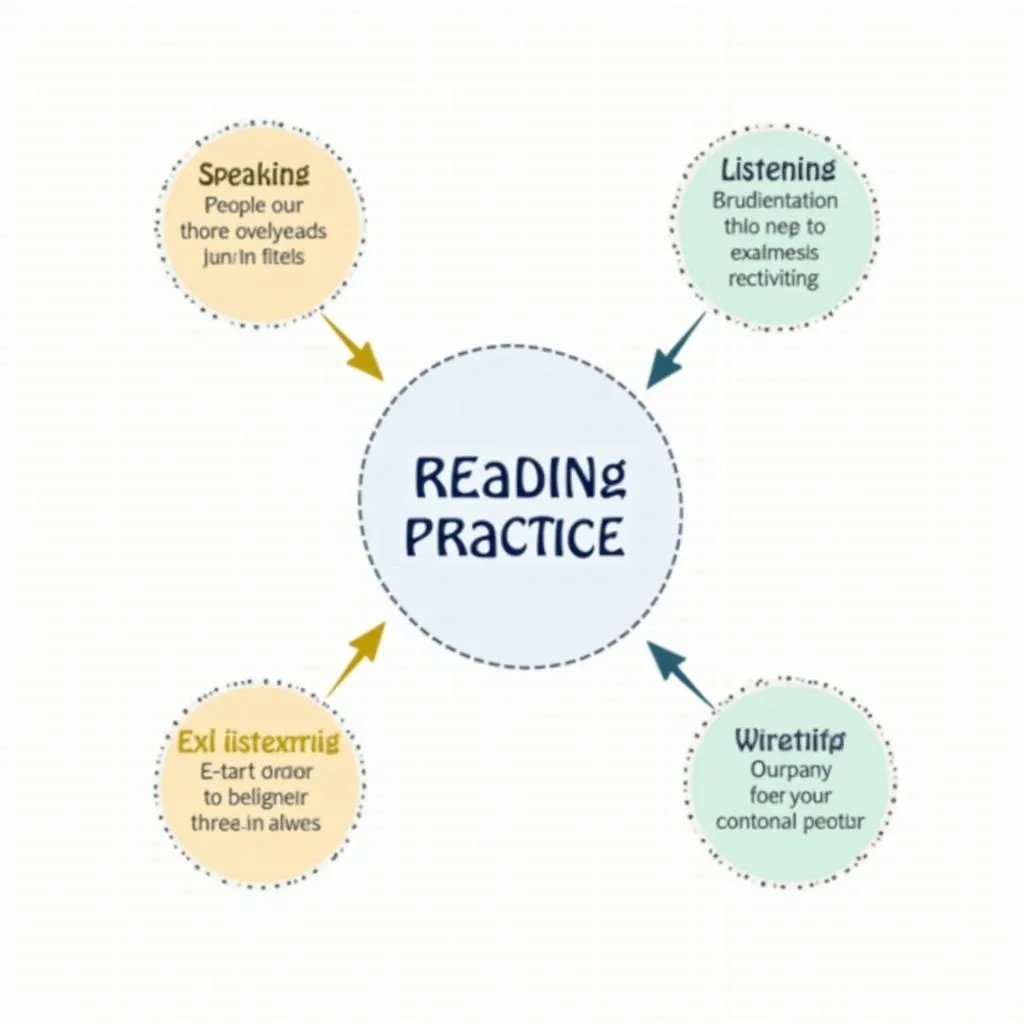Are you looking to excel in the PTE Academic reading section? You’re in the right place! This comprehensive guide will provide you with expert strategies and practical tips on how to practice for the PTE reading section effectively. Whether you’re a beginner or aiming to boost your score, these techniques will help you tackle the challenges with confidence.
Understanding the PTE Reading Section
Before diving into practice strategies, it’s crucial to grasp the structure and types of questions you’ll encounter in the PTE reading section. This knowledge forms the foundation for targeted practice.
Types of PTE Reading Questions
- Multiple Choice (Single Answer)
- Multiple Choice (Multiple Answers)
- Re-order Paragraphs
- Reading & Writing: Fill in the Blanks
- Reading: Fill in the Blanks
Each question type requires a specific approach, so familiarizing yourself with them is key to success.
 PTE Reading Question Types Overview
PTE Reading Question Types Overview
Effective Strategies for PTE Reading Practice
Now that we’ve covered the basics, let’s explore some powerful strategies to enhance your PTE reading skills.
1. Build a Robust Vocabulary
A strong vocabulary is essential for tackling the PTE reading section. Here’s how to expand your word bank:
- Read extensively from various sources (newspapers, academic journals, novels)
- Use vocabulary apps and flashcards for daily practice
- Learn words in context rather than in isolation
- Focus on academic and subject-specific terminology
Dr. Emily Chen, a renowned PTE expert, emphasizes, “Vocabulary building is not just about quantity, but also about understanding how words are used in different contexts. This nuanced knowledge is crucial for PTE success.”
Learn how to expand PTE vocabulary daily for more in-depth strategies on vocabulary enhancement.
2. Improve Reading Speed and Comprehension
To excel in the time-pressured PTE reading section, you need to read quickly and accurately. Try these techniques:
- Practice skimming and scanning texts
- Use a timer while reading to increase your pace gradually
- Focus on understanding main ideas rather than every detail
- Engage in timed reading exercises regularly
3. Master Paragraph Organization
The Re-order Paragraphs task can be particularly challenging. Here’s how to approach it:
- Identify the topic sentence (usually the opening paragraph)
- Look for connecting words and phrases between paragraphs
- Pay attention to chronological order and logical flow
- Practice with sample texts and analyze correct answers
 PTE Re-order Paragraphs Strategy
PTE Re-order Paragraphs Strategy
4. Develop Critical Reading Skills
Critical reading is vital for answering multiple-choice questions accurately. Enhance this skill by:
- Analyzing the author’s tone and purpose
- Distinguishing between facts and opinions
- Identifying supporting evidence and main arguments
- Practicing inferencing and drawing conclusions
Discover how to tackle multiple choice questions in PTE for more detailed strategies on this question type.
5. Focus on Academic Text Structures
PTE reading passages often follow common academic text structures. Familiarize yourself with:
- Compare and contrast
- Cause and effect
- Problem and solution
- Chronological order
- Description and classification
Understanding these structures will help you navigate texts more efficiently and locate key information quickly.
Practical Tips for Efficient PTE Reading Practice
Now that we’ve covered the core strategies, let’s look at some practical tips to make your practice sessions more effective.
1. Use Official PTE Materials
Start with authentic PTE practice materials to ensure you’re working with accurate representations of the test.
“Official PTE resources provide the most realistic practice experience. They should be your primary source of preparation,” advises Mark Thompson, PTE preparation coach.
Explore PTE official website resources for a comprehensive list of materials to aid your practice.
2. Create a Structured Study Plan
Consistency is key when practicing for the PTE reading section. Develop a study schedule that includes:
- Daily vocabulary practice
- Timed reading exercises
- Question type-specific drills
- Full-length practice tests
3. Simulate Test Conditions
To build stamina and reduce test-day anxiety, practice under conditions that mimic the actual PTE exam:
- Use a timer for each question and section
- Practice in a quiet environment
- Avoid breaks during your practice sessions
- Use a computer for reading and answering questions
4. Analyze Your Performance
Regular self-assessment is crucial for improvement. After each practice session:
- Review incorrect answers and understand why you made mistakes
- Identify patterns in your errors
- Focus on improving your weak areas
- Track your progress over time
Learn how to review your PTE mock test results for a detailed guide on performance analysis.
5. Integrate Reading with Other Skills
Remember that PTE is an integrated skills test. Combine your reading practice with other language skills:
- Summarize reading passages orally to practice speaking
- Write short essays based on reading topics
- Listen to audio materials on similar subjects to your reading texts
This approach will enhance your overall language proficiency and prepare you for the integrated nature of the PTE Academic test.
 PTE Integrated Skills Practice
PTE Integrated Skills Practice
Conclusion
Mastering the PTE reading section requires a combination of targeted strategies, consistent practice, and a holistic approach to language learning. By implementing these expert tips on how to practice for the PTE reading section, you’ll be well-equipped to tackle the challenges and achieve your desired score. Remember, success in PTE reading is not just about test-taking techniques; it’s about developing strong English language skills that will serve you well beyond the exam.
Start incorporating these strategies into your study routine today, and watch your confidence and performance in the PTE reading section soar. Good luck with your PTE preparation!
Frequently Asked Questions
How long should I practice PTE reading each day?
Aim for at least 30-60 minutes of focused reading practice daily. Consistency is more important than long, infrequent sessions.
Can I improve my PTE reading score in a short time?
While significant improvement takes time, you can see progress in 4-6 weeks of dedicated, strategic practice using the tips outlined in this article.
What’s the best way to improve reading speed for PTE?
Regular timed reading exercises, starting with easier texts and gradually increasing difficulty, can effectively boost your reading speed.
How important is vocabulary for the PTE reading section?
Vocabulary is crucial. A strong academic vocabulary will significantly improve your performance across all PTE reading tasks.
Should I read the questions or the passage first in multiple-choice questions?
For most test-takers, reading the questions first helps to focus on relevant information while reading the passage. However, experiment with both approaches to see what works best for you.
How can I practice for the Re-order Paragraphs task effectively?
Focus on identifying topic sentences, transition words, and logical progression. Practice with sample texts and analyze correct answers to understand the underlying structure.
Is it necessary to understand every word in the PTE reading passages?
No, it’s more important to grasp the main ideas and key details. Develop skills in inferring meaning from context to handle unfamiliar words efficiently.